
|
Lorna Mills and Sally McKay
Digital Media Tree this blog's archive OVVLvverk Lorna Mills: Artworks / Persona Volare / contact Sally McKay: GIFS / cv and contact |
View current page
...more recent posts

(found)

(found)

Allyson Mitchell: Ladies Sasquatch curated by Carla Garnet for the McMaster Museum of Art, 1280 Main St. W., Hamilton ON

Curator Carla Garnet and unidentified lady friend photos by John Abrams

Installation View

Familiars
As well as a major solo exhibition, Allyson Mitchell curated the current exhibition When Women Rule the World: Judy Chicago in Thread at the Textile Museum, 55 Centre Avenue, Toronto, ON

Judy Chicago The Creation 1984 wool, silk and gold threads 42 x 168”, Woven by Audrey Cowan, Photo: Donald Woodman


Uh-oh, technocats.
Ahhh, the 70s...the brain isn't a machine, it's a blue-eyed, blond-haired, fetal baby boy buffered from the harsh cold world by a hard mother, cobwebs, and a gentle mother. Go science writers, go!

The brain is extraordinarily delicate, and is provided with extraordinary protection. ... It is swaddled in three distinct protective layers — more than any other organ of the body. Like the fetus, it swims in a surrounding fluid that absorbs shocks. Jellylike tissue, blood vessels and fluid are all encased in a tough membrane . Finally, the whole is surrounded by the bone of the skull. (p.20)
[...]
The outer layer is the cranial bone. Underneath it is the dura mater (Latin for "hard mother"), a tough membrane which enfolds both hemispheres. Next comes the arachnoid (Greek for "cobweb"), an elastic membrane that encloses the subarachnoid space. This space is filled with filaments, blood vessels and cerebrospinal fluid...The final layer is a thin membrane, the pia mater ("gentle mother"), that hugs the cortex in all its convolutions. (p.21)
Sunday - Nick Cave
Stagger Lee
The Weeping Song
The Carny



A terrific post and discussion thread on praxistheatre.blogspot (via simpleposie) about the magical $25 Million the conservatives pulled out of their asses to give to two Toronto business men (founders of the Luminato festival) in order to create the Canada Prizes for the Arts and Creativity.

One of the best quotes in the thread is from commenter michael:
"The money won't be used to develop anything: it's a tool to give Luminato - and by association Canada - more cred. They'll be able to attract talent, and "a better class" of talent at that, which they think will inspire us all. They won't be giving money to some unknown artist who is brilliant and needs exposure to become the "next Yoyo Ma", they'll give it to someone who is already well on the way, and who will make Canada look benevolent by taking our prize and a paid gig. It's managed culture, and it's a pretty pathetic way to suggest that "this is how it's done" by offering the money to non-Canadians.And please let's not say that this means the private sector is 'stepping up to support the arts in light of Government cuts'. That's absolute drivel.
You want to reach out to the international arts community? First of all, put back the funding that lets artists go abroad when they are invited to do so. Second: ensure that any artist who wants to make art in Canada can do so without being burdened with the bizarre notion of obligation that we have to deal with (bizarre, because we have still failed to define what "Canadian" means, and we probably never will - I haven't got a clue how to be a Canadian artist except to not trust my own instincts). That's it - it's that simple, but it scares the pants off of any politician because it means giving up control of, and being unable to take credit for (or defend yourself from) what the artist's work says."
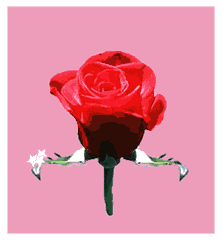
(that's for j@simpleposie for spending so much time and energy tracking the news on the funding cuts)
Give us 25 mil for this blog, we'll fucking inspire you.

Today, I have nothing, but Pres. Obama is in Ottawa today and the best comment on this trip was in one of the Wonkette threads:
"I am sorry, but my snark fails in the face of the profundity of cuteness that is Canada’s crush on Hopey McChangeypants. It’s like kittens and sunbeams with tiny dust-motes of glee."
Joe McKay is currently exhibiting his game Avoid in The Aesthetics of Gaming curated by Michelle Kasprzak
at Pace Digital Gallery, 163 William Street, NYC.
Artist's talk: Thurs Feb 26, at 5:00 pm, followed by a reception at 6:00 pm.

Download Avoid
I hope everyone enjoyed a Fruitful Mormon Holiday yesterday.
Now in other business,
 posted something about not feeling it enough to write about art these days.
posted something about not feeling it enough to write about art these days.


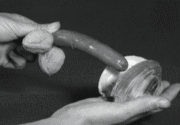
(found)
Sunday - Sergio Méndez
Mas que Nada
Day Tripper
Ye-Me-Li & Wichita Lineman (and pure stair porn)
Tuesday, Feb 17, 2009 at Light Industry - NEW SPACE, 220 36th Street, 5th Floor, Brooklyn, NY

Screen grab from Survival! with Guy Maddin & Greg Klymkiw
"When SHAW cable purchased Winnipeg's local cable station VPW, a rumour was circulated that SHAW had destroyed the public access television archives and were systematically dismantling the public access services. Shortly thereafter, Daniel Barrow began researching, compiling and archiving a history of independently produced television in Winnipeg, Manitoba. In the late '70s and throughout the 80s, Winnipeg experienced a "golden age" of public access television. Anyone with a creative dream, concept or politic would be endowed with airtime and professional production services.
A precedent that went far beyond standard television formula was set in the late '70s when the infamous Winnipeg performance artist Glen Meadmore sat in front of a television camera and silently picked at his acne for 30 minutes each week in a program called The Goofers (later The Glen Meadmore Show). Winnipeg Babysitter traces this and other unique vignettes from a brief synapse in broadcasting history when Winnipeg cable companies were mandated to provide public access as a condition of their broadcasting license. "

(found)
Joester has been talking about Johan Huizinga's book Homo Ludens on a recent thread. I'm interested in how similar Huizinga's characteristics of play are to potential descriptions of art. There are differences, of course, but charming cross-overs.
voluntary: "...all play is a voluntary activity."sidenote: L.M. claims to use the following quote as an error message, "Play only becomes possible, thinkable and understandable when an influx of mind breaks down the absolute determinism of the cosmos."
not ordinary life: "...play is not 'ordinary' or 'real' life. It is rather a stepping out of 'real' life into a temporary sphere of activity with a disposition all its own."
limitedness in time: "Play begins at a certain moment and then it is 'over.'"
repeated: "It is transmitted, it becomes tradition. It can be repeated at any time, whether it be 'child's play' or a game of chess or at fixed intervals like a mystery."
limitedness in space: "All play moves and has its being within a playground marked off beforehand either materially or ideally, deliberately or as a matter of course."
order: "...it creates order, it is order. Into an imperfect world and into the confusion of life it brings a temporary, limited perfection. Play demands order absolute and supreme. The least deviation from it 'spoils the game', robs it of its character and makes it worthless."
aesthetics: "Play has a tendency to be beautiful."
tension: "...testing of the player's prowess"
fairness: "...despite his ardent desire to win he must still stick to the rules of the game."
rules: "All play has its rules."
 Clockwork Android |
 Central Telephone Exchange, New York City, 1880 |
Philip Lieberman (cognitive linguist), Human Language and Our Reptilian Brain: The Subcortical Bases of Speech, Syntax, and Thought, (Cambridge, Mass. & London: Harvard University Press, 2002) Historically, the most complex piece of machinery of an epoch serves as a metaphor for the brain. The metaphor seems to take on a life of its own and becomes a neurophysiological model. In the eighteenth and nineteenth centuries the brain was often compared to a clock or chronometer. During the first part of the twentieth century the model usually was a telephone exchange, and since the 1950s a digital computer. Mechanical-biological analogies, of course, are not limited to neurophsyciology. Physicians bled feverish patients in the early nineteenth century because of a false analogy between blood temperature and steam engines. Early steem engines frequently exploded as pressure increased at high operating temperatures. Safety valves then were invented that released superheated pressure. Hence it followed that bleeding would reduce temperature. As a result of this false analogy, the chances of survival for soldiers wounded at Waterloo were greater if they had not been treated by surgeons immediately after battle. In its own way, the analogy between biological brains and digital comptuers is as fatal for understanding the neural bases of human language." (pp.23-24) | |
 The Medicinal Leech |
 Locomotive Steam Engine |
GRANNYBOOTS!!! Wednesday, February 11, from 7 to 11 pm at The Gladstone Hotel, 1214 Queen St. W., Toronto.
An appalling evening of Valentine's Crafting with Anthony Easton! and Kirsten Johnson!
A Naughty Bits Washing Station courtesy of Keith Cole!
Madame Zsa Zsa The 2 Dollar Psychic by Andrew Harwood!

Tarot and other magycks by FASTWÜRMS!
Plus DJ Backfat! (R.M. Vaughan)
Go there and make something insanely beautiful. Like this:

Seriously, you really can make something as beautiful as this. You just have to believe.
Issue #2 of HUNTER AND COOK, the lovely art magazine produced by Tony Romano and Jay Isaac is now online.

And today I am stealing a jpeg version of a drawing by Seth Scriver that was in the print edition.
(though the Fastwürms' page is pretty damn glorious too)
...
Daniel Levitin, This is Your Brain on Music, (p.92):
Before going any further, I have to admit a bias in the way I approach the scientific study of minds and brains: I have a definite preference for studying the mind rather than the brain. Part of my preference is personal rather than professional. As a child I wouldn't collect butterflies with the rest of my science class because life — all life — seems sacred to me. And the stark fact about brain research over the course of the last century is that it generally involves poking around in the brains of live animals, often our close genetic cousins, the monkeys and apes, and then killing (they call it "sacrificing") the animal. I worked for one miserable semester in a monkey lab, dissecting the brains of dead monkeys to prepare them for microscopic examination. Every day I had to walk by cages of the ones that were still alive. I had nightmares.
At a different level, I've always been more fascinated by the thoughts themselves, not the neurons that give rise to them.
Sunday Devotionals - Buffalo Springfield
Sit Down I Think I Love You
For What It's Worth (excerpt) and Mr. Soul (with a Young Young Neil Young)
Bonus Track - Muppets version of For What's it's Worth:


Excerpts from union general membership meeting notes taken during the York University strike






mmmm
(via Joester)(info)

(found)
GOOGLE OCEAN! GOOGLE OCEAN!



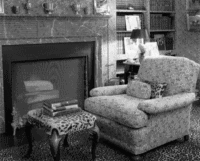
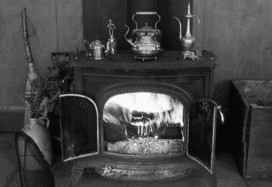


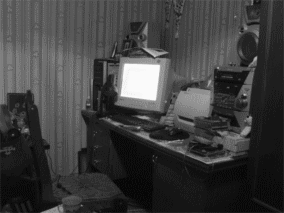
(found)
Sunday devotionals - Herman's Hermits
No Milk Today
Jezebel
Mrs. Brown You've Got a Lovely Daughter